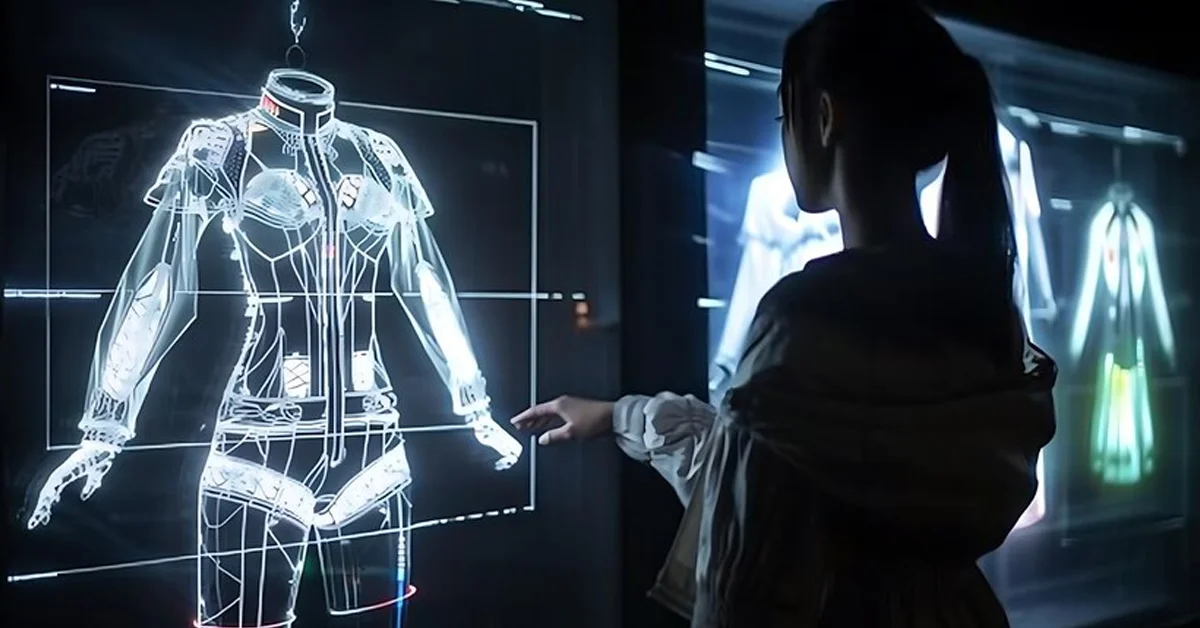Projection map On Body Parts Mograph has transformed the landscape of visual art and design, enabling creators to craft stunning visuals that captivate audiences. This technique is not just limited to buildings and large surfaces; it can also be applied to the human body. In this article, we will explore the fascinating world of projection mapping on body parts, particularly in motion graphics (mograph), and how it unleashes endless creative possibilities.
ALSO READ: Unlocking Creativity: XMind 23.05 Features And Benefits
Table of Contents
ToggleWhat Is Projection Mapping?
Projection mapping, also known as spatial augmented reality, is a technique that allows artists and designers to project images onto irregularly shaped surfaces. Unlike traditional projection, which relies on flat surfaces, projection mapping transforms any object, including body parts, into a dynamic canvas. This technique is often used in events, performances, and installations to create immersive experiences.
The Art of Motion Graphics
Motion graphics combines graphic design principles with animation techniques to create visually engaging content. When applied to projection mapping on body parts, motion graphics can enhance the storytelling aspect of the visuals. By animating images and graphics that react to movement, artists can create a seamless integration of the projected visuals with the human form.
Why Use Projection Mapping On Body Parts?
Enhanced Visual Storytelling
Projection mapping on body parts allows for a unique storytelling medium. It enables artists to visualize emotions, themes, or concepts that might be difficult to express through traditional means. The human body becomes an expressive canvas, making the narrative more relatable and impactful.
Engaging Audience Experience
This technique fosters an interactive experience for the audience. When viewers see visuals projected onto a live performer, they are more likely to feel connected to the performance. The dynamic nature of projection mapping captivates attention, making it a powerful tool for performances, exhibitions, and events.
Breaking Traditional Boundaries
Using body parts as projection surfaces breaks away from conventional design boundaries. It opens up new avenues for creativity, allowing artists to experiment with movement, light, and texture in ways that static surfaces cannot.
Versatility in Application
Projection mapping on body parts can be used across various fields, including fashion shows, dance performances, theater productions, and even advertising campaigns. This versatility allows for diverse applications and innovative collaborations between artists, designers, and technologists.
Techniques For Effective Projection Mapping On Body Parts
Preparing the Surface
Before projection mapping can begin, it’s essential to prepare the body parts that will serve as the canvas. This may involve:
- Selecting the Right Body Parts: Choosing areas that can effectively showcase the visuals, such as arms, legs, or the face.
- Skin Tone Considerations: Taking into account the natural colors of the skin and how they interact with projected colors.
Software and Tools
A variety of software tools can be used for creating and executing projection mapping. Popular options include:
- MadMapper: Known for its user-friendly interface, ideal for live performances.
- Resolume: A powerful tool for VJing and live events that supports advanced projection mapping techniques.
- TouchDesigner: Offers flexibility for creating interactive installations and visuals.
Creating Content
Content creation is a crucial step in the projection mapping process. Here are key considerations:
- Animation Style: The animation should complement the movement of the body. Fluid animations work well with dance performances, while more rigid designs can suit static poses.
- Thematic Relevance: The visuals should align with the overall theme of the performance or installation, enhancing the narrative rather than detracting from it.
Calibration and Testing
Proper calibration is essential for successful projection mapping. This includes:
- Aligning Projections: Ensuring that the visuals align perfectly with the body movements.
- Testing in Different Lighting Conditions: Projected visuals may vary significantly under different lighting, so thorough testing is crucial.
Case Studies Of Projection Mapping On Body Parts
Dance Performances
Projection mapping has become increasingly popular in contemporary dance. Choreographers utilize this technique to enhance storytelling and visualize abstract concepts. For example, a performance might use vibrant colors and patterns projected onto dancers’ bodies to represent different emotions, creating a powerful visual metaphor for the audience.
Fashion Shows
Fashion designers have begun to embrace projection mapping as part of their runway presentations. By projecting visuals onto models, designers can create an immersive experience that showcases their collections in a unique light. This approach not only highlights the garments but also transforms the entire atmosphere of the show.
Interactive Installations
Artists and technologists are exploring projection mapping in interactive installations. By incorporating sensors that detect movement, these installations can respond to the audience’s actions, creating a dynamic dialogue between the viewer and the artwork. For instance, projections on a participant’s body might change based on their movements, engaging them in a unique experience.
Challenges In Projection Mapping On Body Parts
While projection mapping on body parts offers incredible opportunities, it is not without its challenges.
Technical Limitations
The technical aspects of projection mapping can be complex. Issues such as projector placement, alignment, and resolution can impact the final output. Ensuring high-quality visuals while maintaining the flexibility needed for live performances requires careful planning and execution.
Audience Perception
The effectiveness of projection mapping relies on audience perception. If not executed well, the visuals may distract from the performance rather than enhance it. Balancing the projected content with live action is crucial to maintaining the audience’s focus.
Ethical Considerations
As projection mapping on body parts evolves, ethical considerations arise, especially in terms of consent and representation. Artists must ensure that they respect the individuals involved and consider the implications of their work on body image and identity.
Future Of Projection Mapping On Body Parts
As technology continues to advance, the future of projection mapping on body parts looks promising. Innovations in augmented reality (AR) and virtual reality (VR) may open new doors for immersive experiences. Artists will likely explore these technologies to create even more interactive and engaging performances.
Integration with AR and VR
The combination of projection mapping with AR and VR could revolutionize the way audiences experience performances. Imagine a world where projected visuals interact with virtual elements, creating an even richer narrative and immersive experience.
Accessibility
As projection mapping tools become more accessible, we can expect a surge in DIY projects and grassroots initiatives. This democratization of technology will empower more artists to experiment with projection mapping on body parts, leading to an explosion of creativity and innovation.
Conclusion
Projection mapping on body parts, particularly within the realm of motion graphics, is a captivating fusion of art and technology. This technique opens up a myriad of creative possibilities, enabling artists to tell stories in innovative ways and engage audiences on a deeper level. As we look to the future, the potential for further advancements and applications in this field is immense, promising a thrilling evolution in the world of visual art.
ALSO READ: Stay Informed With Woodlake Condominiums News And Updates
FAQs
What is projection mapping?
Projection mapping is a technique that projects images onto irregularly shaped surfaces, including body parts, transforming them into dynamic visual canvases.
How does projection mapping enhance storytelling?
By projecting visuals onto body parts, artists can convey emotions and themes in a relatable way, making the narrative more impactful.
What tools are commonly used for projection mapping?
Popular tools include MadMapper, Resolume, and TouchDesigner, which help create and execute projection mapping projects.
What are the challenges associated with projection mapping on body parts?
Challenges include technical limitations, audience perception, and ethical considerations regarding consent and representation.
What is the future of projection mapping on body parts?
The future includes potential integrations with augmented and virtual reality, as well as increased accessibility for artists to experiment with this technique.

